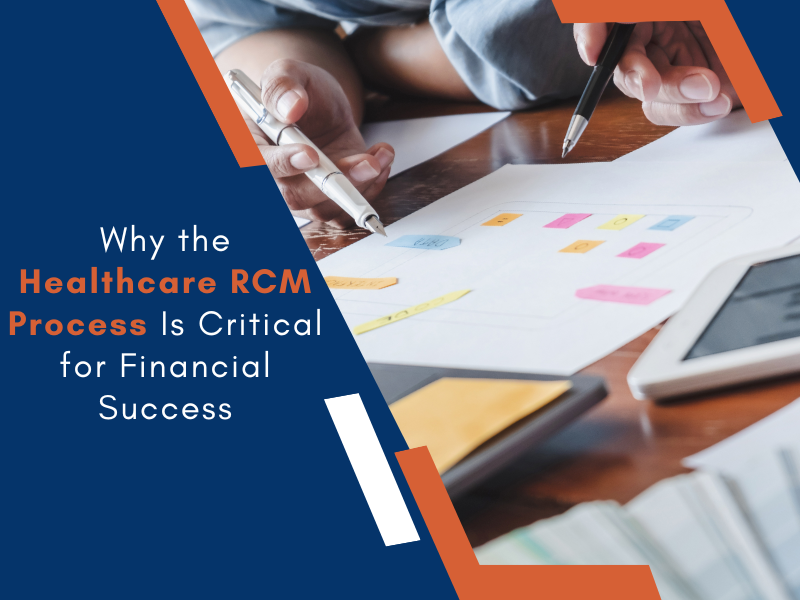In today’s rapidly evolving healthcare landscape, billing for medical services has become an essential function that directly impacts the financial health of practices and providers. Managing medical billing effectively requires navigating complex coding, documentation, and insurance procedures to ensure accurate and timely reimbursements. Inaccuracies in billing can lead to claim denials, delayed payments, and potential financial losses, which is why an efficient billing process is crucial. This guide explores the key steps involved in billing for medical services to help providers achieve smoother operations, minimize errors, and secure timely payments.
1. Patient Registration
The billing process for medical services starts with accurate patient registration. This involves gathering essential information, including the patient’s personal details, insurance information, and medical history. During registration, it’s vital to confirm the patient’s insurance coverage to ensure that the services they require are covered by their plan. Any errors at this stage, such as incorrect insurance information or spelling mistakes in patient details, can result in denied claims later on.
Key Points for Effective Patient Registration:
- Verify insurance coverage and eligibility before each visit.
- Update patient information regularly to keep records accurate.
- Ensure compliance with HIPAA guidelines during the data collection process.
2. Insurance Verification and Authorization
Once patient information is collected, the next step in billing for medical services is to verify insurance and obtain necessary authorizations. Insurance verification is critical to avoid claim rejections, as it confirms the services covered under the patient’s plan and determines whether a co-payment or deductible applies. Additionally, certain procedures require prior authorization from the insurance company, and failing to obtain it can lead to claim denial.
Steps to Ensure Successful Insurance Verification and Authorization:
- Check the type of plan, coverage details, and any co-payment requirements.
- Obtain prior authorization for procedures that require it.
- Communicate with the patient regarding out-of-pocket expenses they may be responsible for.
3. Accurate Coding of Medical Services
Accurate coding is one of the most crucial aspects of billing for medical services. Medical coders use standardized codes to translate diagnoses, treatments, and procedures into a format recognized by insurance companies. Using the correct codes—such as ICD-10 for diagnoses, CPT for procedures, and HCPCS for additional services—is essential for claim acceptance. Errors in coding can result in delays, denials, or audits, making this a high-stakes step in the billing process.
Best Practices for Accurate Medical Coding:
- Stay updated with coding guidelines, as codes and rules are frequently revised.
- Double-check codes for accuracy before submitting claims.
- Conduct regular training sessions for coders to maintain expertise in code selection.
4. Charge Capture
Charge capture involves recording all billable services provided to a patient during their visit. Every service rendered must be documented accurately to ensure that no revenue is lost. The information recorded in this step will determine the total charges billed to the patient or insurance company. Failing to capture charges accurately can lead to revenue leakage and financial discrepancies.
Steps for Effective Charge Capture:
- Document all services provided, including minor procedures, to capture full revenue.
- Implement an electronic health record (EHR) system to streamline charge capture and minimize human error.
- Regularly audit charge capture processes to identify and rectify discrepancies.
5. Claim Submission
Once coding and charge capture are completed, the claim submission process begins. Claims can be submitted electronically or on paper, although electronic submissions are preferred due to faster processing times and reduced errors. It’s crucial to submit claims promptly, as delayed submissions can push payment dates further back. Before submitting a claim, it should be reviewed thoroughly to ensure compliance with payer guidelines and accuracy in patient, provider, and service details.
Tips for Successful Claim Submission:
- Use electronic claim submission to speed up processing and reduce paperwork.
- Verify all details in the claim, including codes, patient information, and provider credentials.
- Follow up on any rejected or pending claims to resolve issues and prevent payment delays.
6. Payment Posting
After a claim is processed, the insurance company will make a payment or issue a denial. Payment posting is the step where payments received are matched to the corresponding claims, ensuring all payments are accurately recorded in the provider’s billing system. This step also involves reviewing Explanation of Benefits (EOB) statements to understand payment amounts, adjustments, or denials. Accurately posting payments is essential to maintain financial transparency and identify any gaps in reimbursement.
Effective Payment Posting Techniques:
- Reconcile payments with EOBs to ensure accuracy.
- Record payments in a timely manner to maintain an accurate financial overview.
- Identify and analyze denials to address underlying causes and prevent future issues.
7. Denial Management and Appeals
Unfortunately, denied claims are a common challenge in billing for medical services. Denials can occur for various reasons, such as incorrect coding, insufficient documentation, or a lack of prior authorization. Denial management involves analyzing the reasons for claim denials, correcting the issues, and resubmitting the claims. In cases where a claim is unfairly denied, an appeals process can be initiated.
Steps to Effective Denial Management:
- Review denied claims to understand the root cause.
- Correct any errors promptly and resubmit the claim.
- Establish an appeals process to contest denied claims, if appropriate.
8. Patient Billing and Collections
After insurance payments are processed, any remaining balance is billed directly to the patient. This stage requires clear communication, as patients may have questions about their outstanding balance or payment options. Providing easy payment methods and transparent billing statements can improve patient satisfaction and encourage timely payments. Collections are sometimes necessary if a patient has not paid their balance after a certain period. However, effective communication can often reduce the need for aggressive collections.
Key Strategies for Successful Patient Billing and Collections:
- Send timely and detailed billing statements that explain charges and outstanding balances.
- Offer multiple payment options to make the process convenient for patients.
- Communicate with patients about their balances before sending them to collections.
9. Continuous Monitoring and Improvement
Billing for medical services is not a one-time effort; it’s an ongoing process that benefits from regular monitoring and improvement. Keeping track of key performance indicators (KPIs) such as claim denial rates, time to payment, and collection efficiency can reveal areas for improvement. Additionally, regular training sessions for staff on billing updates, coding changes, and compliance can enhance accuracy and efficiency in the billing process.
Tips for Monitoring and Improving the Billing Process:
- Track KPIs to assess the efficiency of the billing process.
- Invest in training and continuous education for billing and coding staff.
- Stay updated with changes in insurance guidelines and compliance regulations.
Conclusion: Achieve Billing Efficiency with Apaana Healthcare
A seamless billing process is essential for healthcare providers to achieve financial stability and ensure timely reimbursements. By following these key steps in billing for medical services, providers can minimize errors, reduce claim denials, and maintain a positive revenue stream. However, managing billing in-house can be time-consuming and complex, especially for small practices. Outsourcing to a reliable billing service can streamline operations and relieve providers of the burden of navigating the intricacies of billing.
At Apaana Healthcare, we specialize in operational excellence across global healthcare management solutions, focusing on providing comprehensive outsourced services for health plans. From member enrollment and claims administration to medical billing, coding, and provider engagement, Apaana Healthcare ensures cost-effective solutions tailored to meet your needs. By choosing Apaana Healthcare, you are entrusting your billing and revenue cycle management processes to experts dedicated to accuracy, efficiency, and optimal financial outcomes. Let us help you focus on patient care while we take care of your billing needs!





